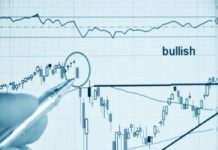Markets
Today’s economic calendar was all but empty but that didn’t prevent markets from showing some interesting intraday dynamics, especially on FX markets. The dollar was well bid throughout the day in the wake of the Senate approving a slightly amended $1.9tn spending bill. Greenback strengthening came even as overall sentiment was rather upbeat. The surge in oil prices after an intercepted attack on Saudi Arabia’s key export facility eased and may have contributed to the dollar’s performance as well. EUR/USD managed to keep the 1.19 during Asian dealings but fell prone to gravity at the start of the European session, additionally weighed down by disappointing German industrial production (cf. headline below). The technical picture risks deteriorating even further after breaking below 1.1952 end of last week, triggering a return to the sideways 1.16/1.20 trading range. Support at 1.188 (61.8% retracement from November 2020 – January 2021) is being heavily tested as we speak (1.187). The trade-weighted USD took out 92(.3) and is trying to overcome resistance near 92.2. USD/JPY ekes out gains to trade at a new recovery high of 108.7. Sterling’s performance is once again impressive. EUR/GBP was drawn to the 0.86 area several times last week. The pair finally gave in today. After stumbling below that support zone, a small technical acceleration brought EUR/GBP to 0.858 currently, despite momentum indicators suggesting being oversold. Next important support at 0.857 is already within striking distance with 0.854 (2021 low) next on the radar. GBP/USD is going nowhere in the 1.38/1.385 area. A balanced speech by Bank of England governor Bailey had little impact on markets. He said the BoE is still preparing for negative rates but that shouldn’t be regarded as a policy hint. Risks to the economic recovery are still tilted to the downside “though less so as time goes by”. On inflation, Bailey noted the central bank must be ready to tackle inflation risks to both sides.
Core bonds lose ground today with USTs underperforming the German Bund for the obvious (fiscal stimulus) reasons mentioned above. The yield rise was capped somewhat by the oil price reversal though the US yield curve still bear steepened with changes varying form +1 bps (2-yr) over 3.9 bps (5-yr) to 3 bps (10-yr, testing key 1.6% resistance area). German yields gapped higher at the open but gains faded as trading evolved only to reverse course again when early US investors started joining. Yields are rising 1 to 2 bps at the belly of the curve. Peripheral spread changes vs. Germany’s 10y yield tightened a few basis points. Greece (-3 bps) and Italy (-4 bps) outperformed. European equities continue to outperform the US, maybe slightly supported by a stronger dollar, amongst others.
News Headlines
According to the March inflation report of the National Bank of Poland, the central path for inflation over the 2021/2023 period is set at 3.1% for 2021 (from 2.6% in November), 2.8% for 2022 (from 2.7%) and 3.2% for 2023. The NBP has an inflation target of 2.5% with a deviation allowed of +/- 1%. The forecast for growth was upwardly revised to 4.1% in 2021 (from 3.1% in November), from 5.7% to 5.4% for 2022 with the 2023 central expectation also put 5.4%. The zloty today continued its weakening trend, but this weakening was in line with other currencies in the region. EUR/PLN currently trades 4.5975.
German industrial output in January unexpectedly contracted 2.5% M/M, bringing the Y/Y figure to -3.9% (from 1.0% in December). It was the first negative monthly reading after eight consecutive positive growth figures. The decline was mainly caused by a 12.2% contraction in construction activity, which was probably partly due to weather conditions. Activity in the manufacturing sector declined a modest 0.5% M/M. The Economy Ministry pointed to a semi-conductor shortage in the auto-industry as a factor for the decline. Machinery manufacturers still recorded a noticeable increase in output, according to the Ministry. Energy output also rose 0.6% on a monthly basis.












